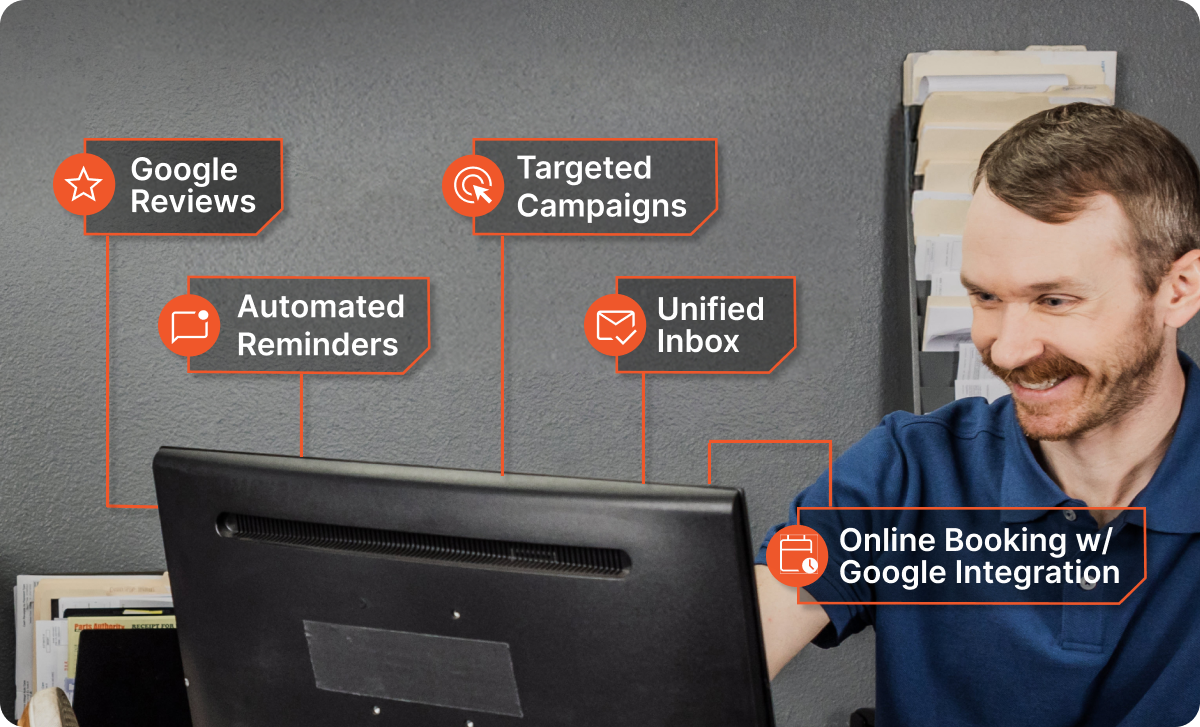“My way or the highway.” I think that’s a mentality that many new shop owners—heck, new bosses in any industry—have with their teams when they first start out.
I sure did.
When I opened my shop, I had my own idea of what I wanted the place to look like, my own idea of how to run an auto repair shop. Look, 30 years ago, I was all about growth. But nowadays, things have changed. People’s belief systems have changed.
When old guys like me try to apply the old “I’m the boss” methods of leadership, it just doesn’t work. So, I had to learn to change my mindset.
It wasn’t an overnight thing. I learned tidbits of wisdom here and there and had to connect the dots.
But over the years, I’ve developed some principles that I think every shop owner can use on how to run an auto repair shop.
1. Train Leaders, Not Managers
For years, I trained people at my shop to be managers—store managers, assistant managers, office managers. It seems like a pretty straightforward thing to do. You’re busy, you need people to help you run the show, so you train them up to be managers.
One day, I was talking to another shop owner at a conference, and he was talking about growing leaders, and making everyone on his team a leader, even his youngest guy.
And I realized “Wait a minute. I don’t need managers. I need leaders.”
Managers finish to-do lists, unlock the doors at the stores, and think about what they need to do. They help the customers. But leaders do something different. They grow the people around them, set the level of talent, set the level of excellence. Leaders focus on inspiring others, on setting the bar higher.
I had to change my entire thought process on leading a team and creating leaders. I figured since I was already training managers anyways, I could change direction and instead start a leadership training series for my team, totally voluntary.
Al’s Book Recommendations
I got Simon Sinek’s book, Leaders Eat Last, and used it as the curriculum for mentoring my people. Of course, as a team, we still need standard operating procedures.
But the focus is now on leadership, not just processes.
- Leaders Eat Last by Simon Sinek
I believe this is the foundational book anyone who wants to transform their leadership mindset should read. - Profit First: Transform Your Business from a Cash-Eating Monster to a Money-Making Machine
By Mike Michalowicz
Tremendous financial book that everyone in school should read. It'll change your financial picture big time. It's so simple but it absolutely works.
- Leadership 101: What Every Leader Needs to Know by John C. Maxwell
I'm currently basing some of my leadership training on this book. It's a fantastic dive into what strong leadership is. - Atomic Habits: An Easy & Proven Way to Build Good Habits and Break Bad Ones by James Clear
A pretty cool book that'll teach you great tactics for building habits. - Lessons from the Mouse: A Guide for Applying Disney World's Secrets of Success to Your Organization, Your Career, and Your Life by Dennis Snow
A fabulous, practical book about customer service.
Build Out Your Team To Support Your Operations
Today, I have eight people on my leadership team across both my locations (including my two daughters—one is the Operations Manager, the other handles admin and customer service. They bounce between the two locations, just like me).
But the whole “train leaders” mentality was an adjustment for me. I mean, I’m the guy that always had the microphone and wouldn’t let anyone else use it. But now, getting my team’s comments and input is important. You have to be a good moderator to engage people, even the quiet ones.
You’ve got to go, “Hey, we just talked about how we wanted to do this customer event” (or this, that, and the other) and then ask, “What are your thoughts? I wanted to hear what you have to say.”
After all, I helped them develop as leaders for a reason. If I don’t get their input, what’s the point? I want everyone to bounce ideas back and forth. If I just turn an idea down, we could be missing something that makes the light turn green for our shops.

2. Invest in Your Team
Investing in your team doesn’t always look like getting people to read a leadership book. Nor should it. I know people get this mental image of shops being a place where “tough guys” with big personalities hang out and work on cars.
But shop employees are people, and everyone needs to feel loved and appreciated. That’s why I created a place where everyone feels like they can get help when they need it.
Our biggest investments are in people.
In 2021, we sent two of our managers to the ATI SuperConference. It was the largest one ever. And the material was so strong. It was all about coming together in unity and considering everything about your shop: your team, your people, what your direction is. It was constant information, just an overload of good ideas.
It cost an extra $10,000 to send two more people to the conference. Some people might think that’s a lot, but a lot of shop owners are spending that much on equipment that might be outdated in two or three years.
The knowledge my team picked up at the conference will help them for the rest of their lives. We’re definitely going to keep sending people back.
Believe in your people.
You have to believe in your people as professionals and not give up on them even if things look bleak.
A while back, I noticed that one of my employees was struggling. I could have fired him. The “old me,” that newbie shop owner thirty years ago, probably would have.
But instead, I put him on probation, gave him some time to take care of some things, and told him his job would be there when he got back.
During his probation, I focused on helping him confront the challenges he was facing and work through them.
It worked.
That employee is now moving forward in his career at the shop. Had no one helped him see that he could rebuild himself, he would have squandered his career. If I’d fired him instead of helping him, he would probably be in even worse shape today than he was back then.
But don’t just invest in your people when times are bad. You have to invest in them when times are good, too. Part of being a better leader is becoming a better person, and to become a better person, you have to lift up people in all areas of their lives, personal and professional.
Celebrate your wins, too.
I celebrate different “wins” with my employees. For example, I wanted my technicians to get ASA certified. Some were sitting on the fence.
So I said that getting the certification would lead to a promotion. When one of my technicians passed his two tests, we threw him a party with cupcakes, balloons. It was a good time.
I want my legacy to be that I made a difference in people’s lives.
Don’t be afraid to think outside the box. Last year, one of my parts vendors called me and said they wanted me to buy from them.
I thought to myself, “Ok, but what are my guys gonna get out of it?” So I cut a deal. I told them, “I want rebates. You’ve asked me to increase my purchases. I did the math. This is how much I need to buy a month. I’ll hit these three tiers. And when I do, you can increase the percentage of my money back.”
With those rebates, I put half of it back into the company and the other half into employee events.
I also got them to foot the bill for some team-building events. That parts vendor paid for a night of go-kart racing and food and a night of top golf and more food for me and my team!
They also paid for our Christmas party, and with the rebate money, I got everyone Visa gift cards and other gifts.
Next on the list? Go to a nice hotel in Colorado Springs and hit up the golf courses and swimming pools. These are the kinds of experiences I want my employees to have.
3. Listen With the Intent to Listen, Not With the Intent to Reply
To invest in your team as much as you can in the best ways possible, you have to change how you listen to people.
I used to listen with the intent to reply, not with the intent to listen. These days, I listen with the intent to listen, not with the intent to reply.
It’s natural to want to listen to see where you can jump in during a conversation. We’re all people and people like to contribute. Getting out of that habit is hard.
But it’s important to break it. Because when you listen with the intent to reply, you’re not truly taking in what the other person is saying.
You’re not really making them feel heard. And in turn, you’re doing yourself a disservice. You’re missing out on things that can really change the way you approach things at the shop for the better.










.svg)



.svg)